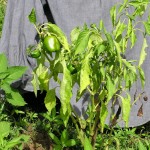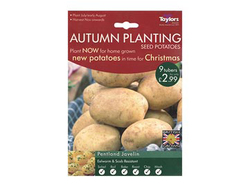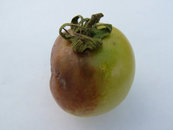
Phytophthora is an unpronouncable family of fungus diseases that affect a wide variety of plants - potato blight is just one of them. The fungus which attacks pepper plants lives in the soil, and thrives in damp conditions. My pepper plants are in the ground, and usually I have to water them like billy-ho as the sub soil is, by late summer, sucking up every drop I pour on.
This year is different, though! The soil is fully charged with moisture and conditions are ripe for Phytophthora to flourish. The first sign is a branch, or, sadly, a whole plant, suddenly wilting catastrophically. The fungus has got into the tissues near the base and has either traveled up the water tubes or girdled the whole plant, cutting off the supply of water and killing the tissues. The fatal sign is a brown soft mushy-looking section.
If only a branch is affected, you may be able to cut ot off and save the rest of the plant. Good luck - mine are doomed, and all because we are so used to dry weather here I never even thought to check about the watering requirements of peppers!
What I now know is that I should have let the soil dry out well, till dry two inches down, before watering. Watering every day - essential for tomatoes - is not so good for peppers! The disease stays in the soil, but as I change the soil in my greenhouse beds every year, as well as rotating the crops, I hope to do better next year!
For more about preventing pepper blight, click here.


 RSS Feed
RSS Feed
